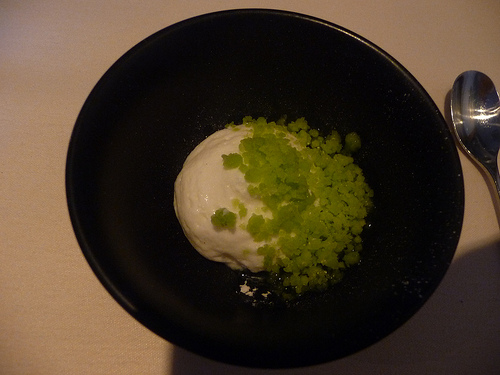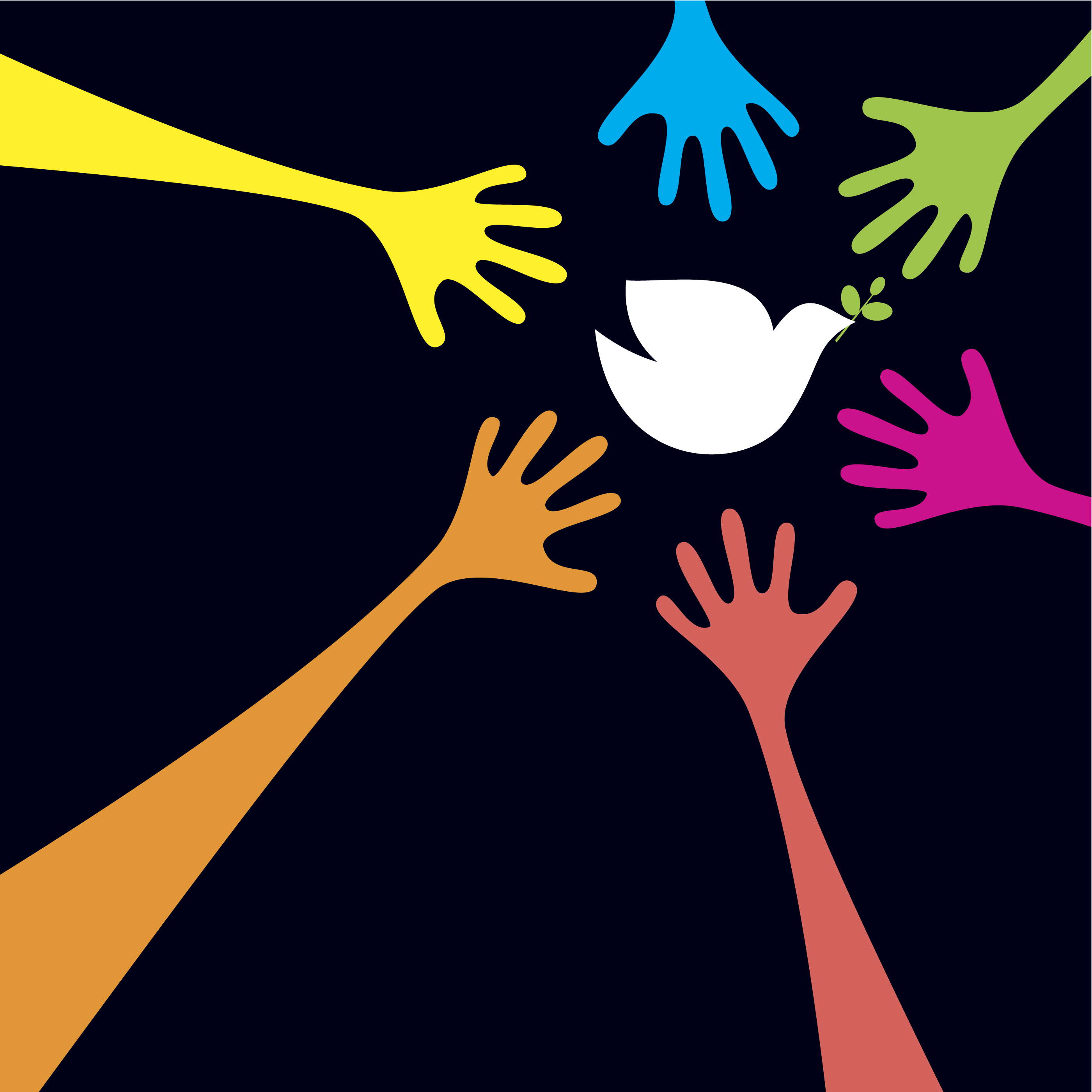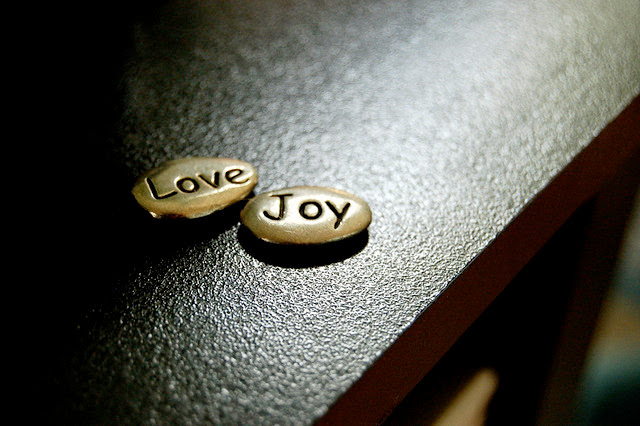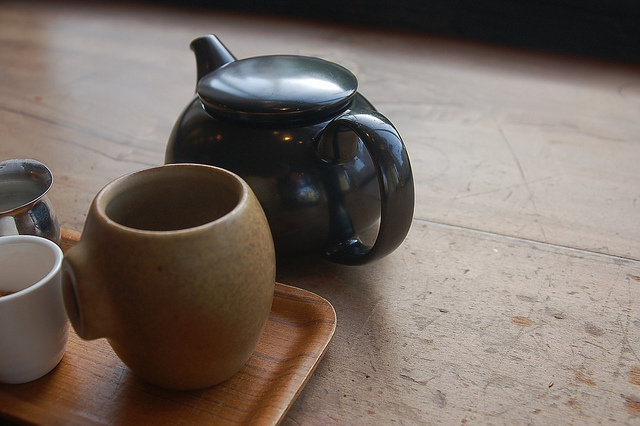
by Deirdre | Aug 2, 2017 | Mindful living
Mindful eating takes the practice of mindfulness – paying attention, living in the moment, simplifying, and being aware of your breath – and brings it to eating. Why mess with way you eat now? Because it helps you manage your cravings, curb overeating and be satisfied with less food. It can help you enjoy your the food you’re eating. And mindful chewing improves your digestion by reducing the amount of work the rest of your system has to do.
The benefits are many and definitely worth the effort but I want to be completely upfront about what the practice is like.
Mindful eating is really hard.
And boring. Really, really boring. That’s the genius of mindfulness in reducing overeating. It’s the complete opposite of mindless eating (that’s a statement worthy of Captain Obvious!)
When I’m having my lunch, concentrating on chew, chew, chew, I often can’t be bothered to finish everything I’ve dished up. My personal struggle with impatience rises up to play. I have a million more interesting things to do. Voila, smaller portions.
Gosh, I’m not really selling this well, am I?
Be assured that there are many people who find mindful eating a revelation. They naturally tune into the sensual aspects. There’s a commonly used mindfulness exercise that involves eating a raisin with the utmost of care and attention. It’s a wonderful exercise and people tend to describe their experience in wondrous, almost rapturous, ways. I always thought it was just me with the bad attitude until a delightful classmate whispered to me in her honey-sweet Southern drawl during an exercise at Duke: “Sweet mother of Jesus. Do we need to pretend we’re having sex with that raisin again?”
Whether you find mindful eating wondrous (like most) or tedious (like me) there is little argument that it works. When you continue through the emotion that springs up as resistance, you start to connect with caring for yourself, with gratitude for the abundance of life, with the simple pleasures of preparing and enjoying food. These spill gently and quietly into other areas of your life and you find that you’re kinder to yourself more naturally.
Guidelines for Mindful Eating
- Have compassion for yourself. Changing your eating habits is really hard. There are a lot of rituals and values around food and meals and you may find that you stumble on them when you try mindful eating. I can get super crabby about mindful eating when I’m tired or hungry.
- Start small. Like all new habits, it’s best to set realistic expectations.Choose one meal or snack each day and commit to focusing on mindful eating at that time.
- Focus on each mouthful. Think about the flavour, texture and even the sound of the food in your mouth. Focus on how much you like, or dislike these sensations.
- Chew. Make sure you chew your food enough so that it is well broken down before you swallow.
- Don’t eat while distracted. Distractions include radio, television, newspapers, books, intense or anxiety producing conversations or music.Try to be attracted to the colors, textures, flavors and smells, and savor each bite. Stop multitasking at meal times. Set aside time for eating without other entertainment.
- Only eat at the table. Another way to minimize mindless munching is to get into the habit of only eating when you are sitting down and able to give the food your full attention. No more snacking on the run. Eat sitting down in a calm environment. This does not include the car.
- Don’t aim for 100% full. Recognize satiety: the quality of being fed or gratified to capacity. As you slowly chew on your food and enjoy each bite, you experience a real fullness that completely satisfies your hunger. This sensation comes before your taste buds want to call it quits. As you learn to identify the hunger satiety point at each meal, you’ll find controlling your taste buds comes easier.
Posted by Deirdre Walsh
Image: The Crossover by Ross Bruniges. Licensed under Creative Commons

by Deirdre | Mar 10, 2016 | Mindful living
Life is change. Growth is optional. Choose wisely. ~~ Karen Kaiser Clark
Change is part of life and life is continual change. We can’t separate the two. We work and work to get things tidy, predictable, manageable, and dependable. Steady income – check. Dependable relationships – check. Feeling healthy and energetic – check. We want to organize those routines of life and have them stay steady so we can polish, shine and grow upward.
We can get discouraged when our steady foundation gets rocked by change. It’s like having to spend money on the non-glam projects during a house renovation – the furnace, roofing, insulation – when we are craving to be picking colors and matching fabric swatches. Ever notice how the really fun home shows on TV do not involve price-checking furnaces? They’re more often about swanning around town, figuring out which chandelier will match our new loveseat.
Grow up and grow down
It’s because we judge each other on all the shiny stuff. With that desire to look like we’ve made it in life – to have all the shiny stuff – we can sometimes overlook when our foundation needs help. It’s important to grow upward to the things that bring happiness and a smile. But it’s also important to grow downward to develop and nourish our roots.
As much as we love our shiny possessions, it’s only our roots that we truly have control over. The shiny things, the dependable relationships, the steady income all come and go. This became very clear to me last month at a mindfulness retreat with Thich Nhat Hahn, a Buddhist monk. (He was a pivotal teacher for Martin Luther King Jr. on his journey to peaceful resistance. He’s 87 and can teach without notes, cross-legged on a cushion, for 2 hours without skipping a beat.)
I attended a talk about handling change with resilience. He compared change and loss to a windstorm passing through a forest. (The Buddhist teachings use a lot of imagery from nature.) All the trees may lose the beauty of their leaves and branches in the storm but it’s those with the deepest roots that will recover to bloom again.
Growing our roots
We can’t control when the storms arrive and what they take with them. But we have three roots that we can nurture – areas to cultivate that will sustain us in the storms:
- the way we treat our body – do we listen to our bodies and treat them with care?
- how we express ourselves – do the words we use with others and the energy and attitude we bring to our relationships make a positive difference?
- how we work with our thinking – do we recognize the good and the positive in our lives and focus on what’s working?
There was a lot of discussion in the group about the most painful changes in life. And while people talked about jobs and possessions, it’s the people who were compassionate with us when we felt vulnerable that stay with us forever. We all agreed that they were missed more for their kind words and loving natures than any material possession they had.
Pass it on
We can sustain the memory of their goodness and compassion by cultivating compassion for others and ourselves. When the winds of change are howling, how do you treat yourself and others? Do you let the stress and discomfort get to you? Do you neglect yourself? Or do you treat yourself with the same kindness and compassion that others have in the past?
Kristin Neff is a leading researcher in the area of self-compassion. Her work is based on the idea that we are healthier and more in touch with our humanity when we can be compassionate towards ourselves in the difficult times of life. You can find out more about her work here. Here’s one of her exercises to help you explore self-compassion:
How do you typically react to yourself?
- What types of things do you typically judge and criticize yourself for (appearance, career, relationships, parenting, etc.)?
- What type of language do you use with yourself when you notice some flaw or make a mistake (do you insult yourself, or do you take a more kind and understanding tone)?
- When you are being highly self-critical, how does this make you feel inside?
- When you notice something about yourself you don’t like, do you tend to feel cut off from others, or do you feel connected with your fellow humans who are also imperfect?
- What are the consequences of being so hard on yourself? Does it make you more motivated and happy, or discouraged and depressed?
- How do you think you would feel if you could truly love and accept yourself exactly as you are? Does this possibility scare you, give you hope, or both?

by Deirdre | Jan 9, 2015 | Mindful living
What if you follow what makes your heart leap?
Have you noticed that many New Years’ resolutions have a scolding tone of voice? No more desserts for you until you’ve cleaned up your exercise routine, young lady. I told you not to spend so much over the holidays, young man. Now go clean that mess up!
Let’s try a different approach, shall we? Let’s go carrot instead of stick.*
Something New for 2015
I am entering 2015 from a different angle and I invite you to come along for the ride. I’m going to frame out the year through a series of 25 questions that ponder some of life’s intriguing questions. With those 25 questions, I’m going to create 100 things – blog posts, webinars, courses, doodles, photos, etc. Anything that helps me express my ideas and experiences about that question. A different question every two weeks. I’ll be diving into the questions with clients, posting on Facebook, tweeting, journalling, Instagramming, creating and checking in with people around me.
Where did this idea come from? Almost out of the blue. I casually joined a group called Quest2015 in early December. I thought it was a group business planning exercise, and it was. What caught my eye initially was a 10% discount for an erasable calendar. I thought it would be great for planning the year out. This makes me laugh now.
Open Wonder
My whole sense of what is possible in life was cracked open in December. I know, I know. That’s a pretty big statement. And we hear phrases like that all the time for some pretty mundane events. But it was a real game-changer, to quote the biz types.
Through small doors come life-changing experiences. Jeffrey Davis, of Tracking Wonder, put out the invitation to business artists to use 12 prompts from a group of innovative thinkers to dive deeper into the why of our businesses. I knew, and had an intellectual crush, on quite a few of them. How could I say no?
One of the early prompts was from Pam Houston. She is the author of four books, including novel Contents May Have Shifted and short stories Cowboys Are My Weakness. I haven’t read her work (soon to be fixed) but others call her beloved and insanely talented. She is Professor of English at UC Davis, directs the literary nonprofit Writing by Writers, and teaches in the Pacific University low residency MFA program.
She asked us to sit quietly and ask yourself, what in the last day or week or month has made your heart leap up? Not what should, or might or always had, but what did. Make that list. Be honest, even if it surprises you. Keep the list with you this month. Add to it when it happens. Train yourself to notice. Then ask your self today, how can I arrange my life to get more of those heart leaps in it?
My Leap
This thing made my heart leap when my husband hung it before Christmas.

And it made my heart leap every time I stepped out the door and I’d forgotten that was there. Why?
Well, it’s shiny and pretty — and I love shiny things. I used to make things like this all the time but I stopped. Life got kind of serious and difficult and I forgot about making things. Then it got busy and making shiny things was frivolous. And often I was too tired to make things. More spiritually than physically.
And I finished it! I started with a hula hoop, some pool noodles, duct tape and a crapload of ornaments. Now it’s a circle of shininess. Sometimes there were balls on the ground and I knew that the squirrels had taken it for a spin. That makes my heart happy. I’d just put them back on for their next spin.
My heart leaps because I have a sense of getting a ‘next time’ to spin on the shiny circle again myself. Making that shiny circle of Christmas sparkliness seemed to herald a return to energy and possibility. Here’s what’s on my list . . .
Dive into sensual pleasures. Movement that nourishes. Joy in others. The beauty of nature. Giving love away like it’s a bottomless pool. Laughing with friends until you cry or spit or expel something. Pretty things that please the eye. Good music. Deeply connecting with others. Seeing people grow into their potential. Remembering warm times from the past. Making things. Writing things. Cooking things.
January is a tricky time of year. There’s a natural settling in that comes from the dead of winter. Many of our animal brethren are hibernating and the song of cozy sings. For those who are internal and introspective, there can be too much burrowing in and losing contact with the pleasures and joys of nature and connection. To much disconnection from the beauty that life offers if we can see it.
I find my body gets so out of synch over Christmas that a sense of depression falls on it by the end of the month. And with my body goes my mind. Adopting the “New Year’s resolutions” of healthy eating and exercise is more about restoring mental and physical balance than losing weight or changing a size. I want to restore the connection to my nourishing inner life.
Nourish Yourself
Sometimes I have trouble recognizing the things that make my heart leap, even with the return of healthy kindness to my body. Then I turn to another two of my intellectual crushes — Rick Hanson and Barbara Fredericton. I’ve been very lucky to meet both of them and was dweeby when I did.
Rick Hanson wrote Hardwiring Happiness, which is filled with practical mindfulness practices that help your brain balance it’s tendency to see the negative. Barbara Frederickson is a researcher and professor of psychology at UNC at Chapel Hill. Her research reveals how positive emotions, fleeting as they are, can tip the scales toward a life of flourishing. Her Positivity website is a good place to start and has a handy app that helps you see where your emotions are at.

This is a perfect time for journalling and visiting with yourself. Ask — where does your heart leap? Pull out your pictures from last year. As you leaf or page through, remember the moments that your heart leapt. As you have a few moments of quiet let your mind wander to the times of pleasure, happiness and joy. Make a list of the important people in your life and write down those heart leaping experiences with them. Then do the same for those times you shared with strangers. Anything that brings you back to the joys of 2014. Let your mind and heart take you from there.
 I divide my experiences into pleasure, happiness, and joy. For me, pleasure is a personal experience. Some delicious chocolate, a good meal, a nice glass of wine. Happiness is a harmony thing. The moments with family and friends of warmth, successes, connection, brightness and order make me happy. Joy comes from a larger place, a place where I can witness the unfolding of what is beautiful and right in the world.
I divide my experiences into pleasure, happiness, and joy. For me, pleasure is a personal experience. Some delicious chocolate, a good meal, a nice glass of wine. Happiness is a harmony thing. The moments with family and friends of warmth, successes, connection, brightness and order make me happy. Joy comes from a larger place, a place where I can witness the unfolding of what is beautiful and right in the world.
Your mission for the next two weeks
Where does your heart leap? Do more of it this year.
This new direction was amped-up inspired by the courageous and amazing people who I am running with during Live The Quest. All of their writing about heart leaps will touch your heart. You’ll find this community on social media using #LivetheQuest. Look for it on Facebook here if you want to join the Quest yourself.
*Not to say that stick doesn’t have its place. Sometimes the stick of a deadline or a promise is just what will keep you chugging along. But it’s a heavy-handed tool and you’re much more treasured than that.
Posted by Deirdre Walsh
Photo: Love joy_ Dave Parker CC 2.0
If you enjoyed this post, please share it with your friends!

by Deirdre | Feb 21, 2014 | Healthy Mind, Mindful living
The world can be a busy, overwhelming, noisy pushy place. I don’t know about you, but it’s hard to tap into my true motivation to stay healthy and balanced. I’m always looking for a soothing oasis of calm and comfort to regain a sense of internal harmony. I do better when those oases involve breathing, tea and moments of mindfulness. These are the “good” habit that I need to make room for in my life.
But staying with these kinds of good habits is deceptively difficult. They seem to be put to the backburner when other people’s needs rise up. It was worth doing some digging to find out a way to help me stick to them. A straightforward method has been developed by BJ Fogg. His method depends on picking the “right seed” – a tiny behavior that is a gateway to a steady habit. Then you pick the “right spot” in your day – adding it just after something you’re already doing. Coaxing it to grow depends on motivation.
Fogg doesn’t really believe in motivation. He feels that if you pick the right small behavior and sequence it right, then you won’t have to motivate yourself to have it grow. It will just happen naturally, like a good seed planted in a good spot. He claims that you don’t need to reach inside to find your true motivation. If you set it up right the new habits will flow like water.
This sounds good, but I’m betting we all have a trail of broken resolutions behind us. So we know instinctively that the story is more complex than this. There always comes a time when the effort of planning for this effortless moment is competing with something easier or more fun or soothing. The planning doesn’t happen and then the moment doesn’t happen.
True Motivation Rises up From Why
There are many times when we need the boost of true motivation to help us push through the hard or the inertia. We often think of motivational speakers or motivational quotes as being a great source for the push. It’s because they engage our emotions – they make us “feel” like we want to push through or “feel” shamed because we don’t want to. But Fogg is on to something when he cautions against waiting for this “feeling” to hit.
There are three kinds of true motivations that run deeper than waiting for the “feeling” to arrive and they are all based on knowing why you want to make the change. The most sustainable why is to feel good about what you’re doing.
- It’s got to be meaningful to you – maybe to others too, but definitely to you
- It’s got to be something you want to learn about and master
- It’s got to feel good along the way
Be True to You
You can count on your motivation when you’re changing for yourself. You have to see, feel and taste how awesome your life will be when you get this thing handled.
Sometimes we think that making big changes will buy us something we don’t already have. Things like confidence, love, respect and self-worth. In this case you’re dancing with your anxiety. Look deeply into the goal to see if you’re being influenced by the people around you and your environment to think you want something different.
Don’t choose a goal that is popular with the cool kids only to achieve it and feel like you’ve just done it to fit in. Choose a goal that is aligned with how you want to feel in your days and your life.
Be a Student of Your Success
Your success will change your life and who you know yourself to be. The things you learn along the way will be transformational. The successes will teach you as much, if not more, than the failures. Grit is what will see you through.
If you’ve outsourced the mastery part of your goal you may reach an endpoint that you’re happy with but you won’t really know how to keep it. I think some of the weight loss programs create this result. You can follow the program and get the results but you won’t have discovered what your body really responds to. You’ll be dependent on someone else’s process for success. A deeper, more satisfying success comes from learning how to make the change for yourself.
Make Feeling Good the Goal
Danielle LaPorte is on to something here with her Desire Map. Her approach makes the assumption that it will be easier to put in the grit and hard work if the goal makes you feel good along the way. If you understand that your deepest desire is to feel more connected – to people and life – then it becomes clear that working two jobs to buy a bigger house isn’t going to get that done.
This is a deeper and more sustainable kind of “feeling”. I don’t think anyone ever wakes up at 5 am and “feels” like they want to put on their runners and head out the door. But the connection with nature that you get when the sun starts to rise on a fresh new day is a very motivating kind of feeling.
How do you stay motivated to make the kinds of changes you want to?
Posted by Deirdre Walsh
Image by iStockphoto
If you enjoyed this post, please share it with your friends!








 I divide my experiences into pleasure, happiness, and joy. For me, pleasure is a personal experience. Some delicious chocolate, a good meal, a nice glass of wine. Happiness is a harmony thing. The moments with family and friends of warmth, successes, connection, brightness and order make me happy. Joy comes from a larger place, a place where I can witness the unfolding of what is beautiful and right in the world.
I divide my experiences into pleasure, happiness, and joy. For me, pleasure is a personal experience. Some delicious chocolate, a good meal, a nice glass of wine. Happiness is a harmony thing. The moments with family and friends of warmth, successes, connection, brightness and order make me happy. Joy comes from a larger place, a place where I can witness the unfolding of what is beautiful and right in the world.